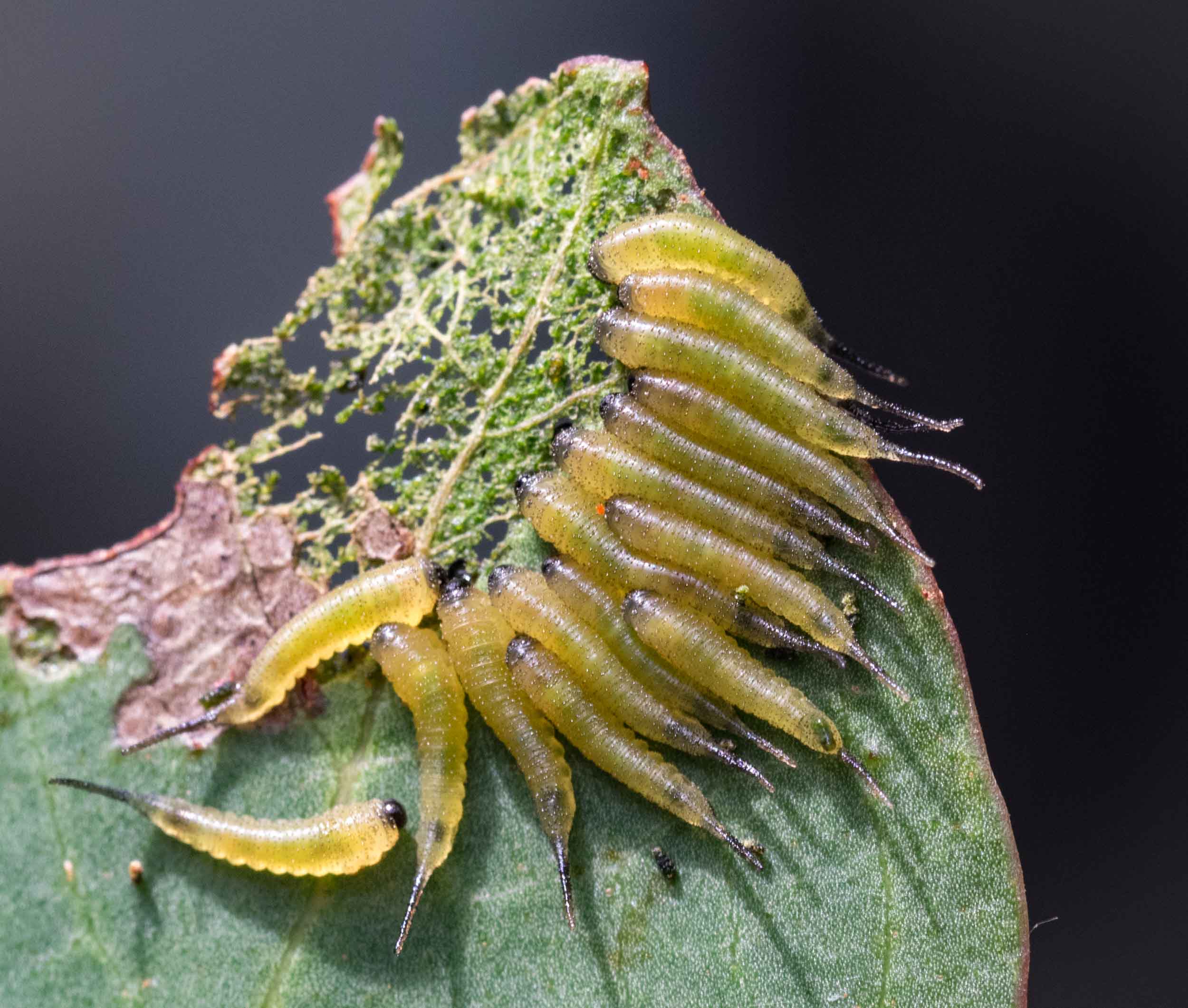
Yellow-faced Honeyeaters
We are now seeing very few of these honeyeaters. Most migrate north for the Winter, but they don't usually leave quite so soon.

Crested Shrike-tit
These distinctive birds are probably here more often than we realise. They typically feed on peeling bark, high in the canopy.

Rose Robin
A young male, I think, just coming into his pink breast feathers. Adult females look very similar, but the brownish wing feathers are more like remnant juvenile plumage. But I could be wrong ...

Rose Robin
The Sacred Kingfishers have left, migrating north for the coming Winter. And it is no coincidence that shy birds like these Rose Robins are suddenly showing themselves once again. The kingfishers are very bossy birds!

White-throated Treecreepers
The treecreepers have fledged their chicks. This female, with the orange cheek patches, is looking a little harried.

White-throated Treecreeper
Female, and busy mother. Her son is just out of sight, lower on the tree trunk.

Thin-tailed robber fly
Leptogaster sp.
These tiny robber flies are currently quite numerous, but unlike their larger and colourful cousins, Leptogaster are easily overlooked.
Order: Diptera; Family: Asilidae

Cup moth caterpillar
Doratifera quadriguttata
Two weeks after collecting it as an early instar, this caterpillar is growing well on a steady diet of eucalyptus leaves.
Order: Lepidoptera; Family: Limacocidae

Common Grass Blue
Zizina otis
A tiny butterfly motionless in the dew of an unseasonably cold Summer morning.
Order: Lepidoptera; Family: Lycaenidae

Common Grass Blue
Zizina otis
As the sun crests the trees, a butterfly spreads its wings to catch the warmth.
Order: Lepidoptera; Family: Lycaenidae

Imperial Hairstreak
Jalmenus evagoras
Another chilly butterfly catching the early sun.
Order: Lepidoptera; Family: Lycaenidae

Sawfly Spitfire larvae
These are the larvae of a wasp (Perga sp.). The female wasp deposits a batch of eggs on a eucalyptus leaf, which the larvae proceed to devour as a pack after they hatch out. To defend themselves, the larva spit eucalyptus oils which they store in their foregut - hence the common name "spitfires".
Order: Hymenoptera; Family: Pergidae

Tricolor Soldier Beetles
Chauliognathus tricolor
The larger female in this tandem pair is just 10mm long. She will lay eggs among the leaf litter, where her larvae will prey upon small invertebrates.
Order: Coleoptera; Family: Cantharidae

Hairpin Banksia flower spike
If you read my blog on flowering of Banksia serrata, you'll recognise this immediately! This species, Banksia spinulosa, our other home Banksia species, started producing flower spikes a month ago. This specimen shows the yellow tepals of the several hundred flowers, which project from the spike.
Family: Proteaceae

Bronze Orange Bug
Musgraveia sulciventris
This rather spectacular bug is a native species, but it has taken a liking to planted citrus. A friend who lives nearby found it -along with many of its friends - feeding and breeding on her lemon tree.
Order: Hemiptera; Family: Tessaratomidae

Blue-banded Bee
Amegilla sp.
Perhaps the best known group of native bees, this one was resting - jaws clamped on the garden wire - while it groomed in the cool of early morning.
Order: Hymenoptera; Family: Apidae

Leafhopper nymph
This leafhopper nymph (Brunotartessus sp.) escaped from a container with eucalyptus foliage I brought into the house. It turned up later on the stage of our microscope, which explains the unusual substrate. Check out this very cute video sequence of it examining me as intently as I examined it - before it did what its name suggests it's good at.
Order: Hemiptera; Family: Cicadellidae

Leafhopper exuvia
This is what the leafhopper nymph leaves behind when it turns into an adult - its old skin.
Order: Hemiptera; Family: Cicadellidae

Emerald Spotted Tree-frog
Litoria peronii
It's now a frog, but just. Still only tiny, and not quite out of the pond. The remaining tadpoles are now huge (for tadpoles).

Yellow-tailed Black-Cockatoo
A noisy flock has been feeding here and nearby for the past week or more. It is apparently common for families to group together in small flocks after breeding season, and roam the coastal forests to feed.
Juvenile (left) with Female (right)

Yellow-tailed Black-Cockatoo
Pair bonding between bouts of feeding and childcare.
Adult female (left), Adult male (right)

Yellow-tailed Black-Cockatoo
The flock has been feeding on fruit and insect larvae. This female is tearing apart an Acacia branch in search of wood boring moth or beetle grubs. Other birds were also putting their strong beaks to good use, cracking open woody Hakea fruit.

Yellow-tailed Black-Cockatoo
I've read (albeit in a rather old book) that only the birds of the east coast feed on larvae - those of Tasmania, Western Victoria and South Australia are reported to be strictly vegetarian.
Adult female























